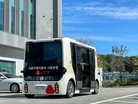Advanced driver assistance makes EVs safe and sustainable

1. The first is lane-keeping assist, which uses sensors to detect when the vehicle is drifting out of its lane and automatically corrects its course. This can be especially useful when a driver is distracted or falls asleep at the wheel.
2. Another common lane-control function is lane-departure warning, which alerts the driver when the vehicle is drifting out of its lane. This can help the driver to take corrective action before the vehicle actually leaves the lane, reducing the likelihood of a collision.
3. On top of these two functions, some EVs also have lane-change assist, which can automatically change lanes when the driver indicates that they want to do so. This can be especially helpful in busy traffic, where it can be difficult for the driver to quickly and safely change lanes.
Overall, lane-control technology makes electric vehicles safer by helping to prevent collisions caused by lane-drifting. In addition to providing an extra layer of safety, this technology can also help to reduce driver fatigue and improve overall driving performance.
Enabling self-driving capabilities could save lives
One of the key advantages of lane-control technology is that it can operate even when the driver’s not paying attention. This is particularly important in situations where the driver is distracted or otherwise unable to fully focus on the road—and with cars becoming more knowledgeable of their driver’s concentration, this opens up self-driving capabilities. By automatically keeping the vehicle within its lane, lane-control technology can help to prevent accidents and make driving safer for everyone.
Lane-control technology is an important innovation that is making electric vehicles safer and more efficient. As electric vehicles become more popular, we can expect to see even more advanced lane-control technologies being developed in the future.
EVs will save their own energy
We see such technologies benefitting applications beyond the road. With autonomous capabilities across various industries, such as mining, farming, and other industrial operations, EVs with ADAS present huge energy saving benefits for businesses and drivers. Measuring millions of data points and leverage an extensive number of scenarios, cars and other vehicles are able to assess road condition much faster than humans. While autonomous solutions aren't perfect in any way, they present new capabilities for e-mobility as time goes on.
Luminar Technologies' example of using autonomy to make vehicles safer is one that resonates with most. By leveraging artificial intelligence (AI), the company will provide solutions to integrate into the latest EVs.


